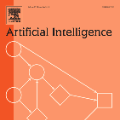With the increasing presence of autonomous SAE level 3 and level 4, which incorporate artificial intelligence software, along with the complex technical challenges they present, it is essential to maintain a high level of functional safety and robust software design. This paper explores the necessary safety architecture and systematic approach for automotive software and hardware, including fail soft handling of automotive safety integrity level (ASIL) D (highest level of safety integrity), integration of artificial intelligence (AI), and machine learning (ML) in automotive safety architecture. By addressing the unique challenges presented by increasing AI-based automotive software, we proposed various techniques, such as mitigation strategies and safety failure analysis, to ensure the safety and reliability of automotive software, as well as the role of AI in software reliability throughout the data lifecycle. Index Terms Safety Design, Automotive Software, Performance Evaluation, Advanced Driver Assistance Systems (ADAS) Applications, Automotive Software Systems, Electronic Control Units.
翻译:暂无翻译




